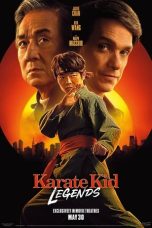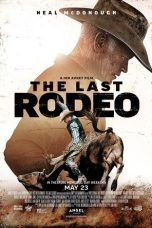Asteroid City (2023) Movie Review: A Whimsical Journey Through Americana and Existentialism
Asteroid City (2023), directed by Wes Anderson, is a vibrant, quirky exploration of grief, existentialism, and human connection set against the backdrop of a fictional 1950s desert town. Anderson’s signature visual style, characterized by symmetrical compositions, pastel color palettes, and meticulously crafted sets, is on full display, making Asteroid City a feast for the eyes. The film features an ensemble cast including Jason Schwartzman, Scarlett Johansson, Tom Hanks, and Tilda Swinton, and takes viewers on a whimsical yet poignant journey through a strange yet familiar world.
Wes Anderson’s work is often defined by its offbeat humor, deadpan dialogue, and thematic depth, and Asteroid City is no exception. This time, the filmmaker uses a desert landscape to explore themes of alienation, scientific discovery, and humanity’s place in the universe.
Plot Summary: A Convention Interrupted
Set in the fictional town of Asteroid City, the film’s narrative revolves around a Junior Stargazer/Space Cadet convention, an annual event held to honor young scientific minds. Parents and their children from around the country converge on the town to present their inventions and share their love of astronomy. The town, which gets its name from a meteorite impact, is an idyllic desert outpost complete with retro motels, diners, and observatories.
Jason Schwartzman plays Augie Steenbeck, a war photographer and widowed father of four, who arrives in Asteroid City with his family. His son Woodrow (played by Jake Ryan) is one of the junior stargazers attending the convention. Augie, still grieving the loss of his wife, is emotionally distant and struggles to connect with his children.
The convention takes a bizarre turn when extraterrestrial life makes an appearance, forcing the government to quarantine the town. What follows is a surreal, introspective exploration of how the town’s inhabitants—scientists, soldiers, and parents alike—react to the uncertainty of their existence, the unknown, and the forces beyond their control.
Themes: Existentialism, Grief, and Connection
At its heart, Asteroid City is a meditation on life’s randomness and the search for meaning in an often incomprehensible universe. The asteroid impact, which the town is built around, serves as a metaphor for the arbitrary nature of existence—an event that disrupts normal life but also invites reflection.
Augie’s personal grief over his wife’s death mirrors the larger existential questions posed by the film. His attempts to connect with his children, particularly his awkward but intellectually brilliant son Woodrow, illustrate the struggle to form meaningful relationships in the face of emotional distance and loss.
The film’s depiction of the quarantine—a sudden, unexpected lockdown due to an alien visitation—feels particularly resonant in a post-pandemic world. Anderson uses this as a vehicle to explore how individuals cope with isolation, fear, and uncertainty. Despite the odd circumstances, the characters in Asteroid City continue to search for meaning and connection, whether through science, art, or personal relationships.
Visual Style: Wes Anderson’s Signature Aesthetic
As with all Wes Anderson films, Asteroid City is visually stunning. The pastel desert landscape, with its clear blue skies, orange sand, and retro-futuristic buildings, creates a nostalgic, dreamlike setting. Anderson’s trademark symmetry and precision are evident in every frame, from the meticulously arranged motels and diners to the geometric placement of the actors.
The use of miniatures, stop-motion animation, and elaborate set designs adds a playful, whimsical layer to the film’s aesthetic. Anderson’s attention to detail extends to the costumes, which evoke the 1950s era with a touch of eccentricity, blending retro Americana with the futuristic elements of a space-obsessed society.
The film’s color palette is dominated by soft, pastel hues that create a surreal and almost otherworldly atmosphere, perfectly complementing the film’s themes of alienation and discovery. The contrast between the vast, barren desert and the vivid, artificial colors enhances the sense of isolation and detachment felt by the characters.
Performances: A Stellar Ensemble Cast
Asteroid City features a star-studded ensemble cast, and each actor brings their unique flair to Anderson’s stylized world. Jason Schwartzman shines as the emotionally conflicted Augie Steenbeck, delivering a subtle performance that balances deadpan humor with genuine pathos. His scenes with Scarlett Johansson, who plays Midge Campbell, a famous but disillusioned actress, are particularly compelling as both characters struggle to process their personal grief and existential dilemmas.
Johansson delivers a standout performance, playing Midge with a mixture of vulnerability and detached coolness. Her character, like Augie, is dealing with a sense of loss and alienation, and the chemistry between Schwartzman and Johansson lends an emotional depth to the otherwise quirky proceedings.
Tom Hanks, as Augie’s father-in-law, provides warmth and gravitas to the film. Hanks’ character steps in to help care for Augie’s children, adding a layer of familial love and responsibility to the storyline.
The supporting cast, including Tilda Swinton, Bryan Cranston, Edward Norton, and Adrien Brody, each contribute to the film’s unique rhythm, with their characters serving as both comic relief and reflections of the film’s larger existential themes.
Humor and Dialogue: Anderson’s Signature Wit
Anderson’s dry humor and quirky dialogue are central to the film’s charm. The characters’ deadpan delivery and witty exchanges provide moments of levity amidst the film’s deeper philosophical questions. The absurdity of the situation—a small desert town quarantined due to an alien visit—gives Anderson ample opportunity to inject surreal and often laugh-out-loud moments into the narrative.
Yet, beneath the humor lies a sense of melancholy and introspection. The film’s dialogue often touches on themes of isolation, purpose, and the need for human connection, allowing Anderson to balance comedy with more serious, thought-provoking ideas.
Why Asteroid City is Worth Watching
Asteroid City is quintessential Wes Anderson—visually dazzling, deeply philosophical, and filled with offbeat humor. It’s a film that invites multiple interpretations, with its blend of retro Americana, science fiction, and existential musings. Anderson’s exploration of grief, loneliness, and the search for meaning will resonate with viewers looking for more than just surface-level entertainment.
The film’s aesthetic beauty alone is enough to make it worth watching, but it’s the emotional depth beneath the stylized surface that gives Asteroid City its staying power. The film challenges viewers to reflect on their own lives, relationships, and place in the universe, making it a rich and rewarding experience for fans of Anderson’s unique cinematic vision.
Where to Watch Asteroid City Online
As of 2024, Asteroid City is available for streaming, rental, or purchase on several platforms:
1. Streaming Platforms:
- Peacock: Available to stream on Peacock for subscribers.
- Amazon Prime Video: Available for rental or purchase in HD or 4K.
- Apple TV/iTunes: Available to rent or purchase.
- Google Play Movies & YouTube: Both platforms offer rental and purchase options.
2. Rental and Purchase:
- Vudu: Available for rent or purchase in multiple formats, including UHD.
- FandangoNOW: Offers the film for rent or purchase, often in 4K quality.
Conclusion
Asteroid City (2023) is a masterfully crafted film that blends Wes Anderson’s signature visual style with profound themes of existentialism, grief, and human connection. With an ensemble cast delivering stellar performances, a witty and whimsical script, and stunning visuals, the film is both a cinematic delight and a thought-provoking exploration of life’s mysteries. Whether you’re a longtime fan of Anderson or new to his work, Asteroid City is a must-watch for anyone seeking a unique and visually immersive film experience.

















